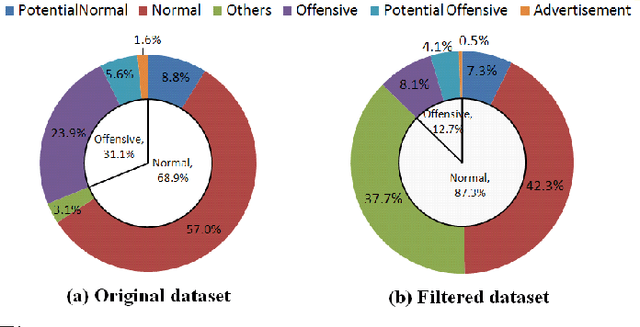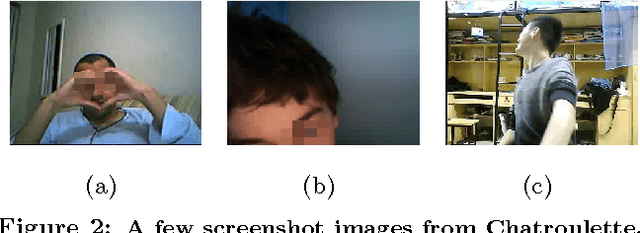Sui Huang
Biomedical knowledge graph-enhanced prompt generation for large language models
Nov 29, 2023



Abstract:Large Language Models (LLMs) have been driving progress in AI at an unprecedented rate, yet still face challenges in knowledge-intensive domains like biomedicine. Solutions such as pre-training and domain-specific fine-tuning add substantial computational overhead, and the latter require domain-expertise. External knowledge infusion is task-specific and requires model training. Here, we introduce a task-agnostic Knowledge Graph-based Retrieval Augmented Generation (KG-RAG) framework by leveraging the massive biomedical KG SPOKE with LLMs such as Llama-2-13b, GPT-3.5-Turbo and GPT-4, to generate meaningful biomedical text rooted in established knowledge. KG-RAG consistently enhanced the performance of LLMs across various prompt types, including one-hop and two-hop prompts, drug repurposing queries, biomedical true/false questions, and multiple-choice questions (MCQ). Notably, KG-RAG provides a remarkable 71% boost in the performance of the Llama-2 model on the challenging MCQ dataset, demonstrating the framework's capacity to empower open-source models with fewer parameters for domain-specific questions. Furthermore, KG-RAG enhanced the performance of proprietary GPT models, such as GPT-3.5 which exhibited improvement over GPT-4 in context utilization on MCQ data. Our approach was also able to address drug repurposing questions, returning meaningful repurposing suggestions. In summary, the proposed framework combines explicit and implicit knowledge of KG and LLM, respectively, in an optimized fashion, thus enhancing the adaptability of general-purpose LLMs to tackle domain-specific questions in a unified framework.
Explaining Deep Learning Models - A Bayesian Non-parametric Approach
Nov 07, 2018



Abstract:Understanding and interpreting how machine learning (ML) models make decisions have been a big challenge. While recent research has proposed various technical approaches to provide some clues as to how an ML model makes individual predictions, they cannot provide users with an ability to inspect a model as a complete entity. In this work, we propose a novel technical approach that augments a Bayesian non-parametric regression mixture model with multiple elastic nets. Using the enhanced mixture model, we can extract generalizable insights for a target model through a global approximation. To demonstrate the utility of our approach, we evaluate it on different ML models in the context of image recognition. The empirical results indicate that our proposed approach not only outperforms the state-of-the-art techniques in explaining individual decisions but also provides users with an ability to discover the vulnerabilities of the target ML models.
Image Matters: Visually modeling user behaviors using Advanced Model Server
Sep 04, 2018



Abstract:In Taobao, the largest e-commerce platform in China, billions of items are provided and typically displayed with their images. For better user experience and business effectiveness, Click Through Rate (CTR) prediction in online advertising system exploits abundant user historical behaviors to identify whether a user is interested in a candidate ad. Enhancing behavior representations with user behavior images will help understand user's visual preference and improve the accuracy of CTR prediction greatly. So we propose to model user preference jointly with user behavior ID features and behavior images. However, training with user behavior images brings tens to hundreds of images in one sample, giving rise to a great challenge in both communication and computation. To handle these challenges, we propose a novel and efficient distributed machine learning paradigm called Advanced Model Server (AMS). With the well known Parameter Server (PS) framework, each server node handles a separate part of parameters and updates them independently. AMS goes beyond this and is designed to be capable of learning a unified image descriptor model shared by all server nodes which embeds large images into low dimensional high level features before transmitting images to worker nodes. AMS thus dramatically reduces the communication load and enables the arduous joint training process. Based on AMS, the methods of effectively combining the images and ID features are carefully studied, and then we propose a Deep Image CTR Model. Our approach is shown to achieve significant improvements in both online and offline evaluations, and has been deployed in Taobao display advertising system serving the main traffic.
Towards Interrogating Discriminative Machine Learning Models
May 23, 2017



Abstract:It is oftentimes impossible to understand how machine learning models reach a decision. While recent research has proposed various technical approaches to provide some clues as to how a learning model makes individual decisions, they cannot provide users with ability to inspect a learning model as a complete entity. In this work, we propose a new technical approach that augments a Bayesian regression mixture model with multiple elastic nets. Using the enhanced mixture model, we extract explanations for a target model through global approximation. To demonstrate the utility of our approach, we evaluate it on different learning models covering the tasks of text mining and image recognition. Our results indicate that the proposed approach not only outperforms the state-of-the-art technique in explaining individual decisions but also provides users with an ability to discover the vulnerabilities of a learning model.
SafeVchat: Detecting Obscene Content and Misbehaving Users in Online Video Chat Services
Jan 17, 2011



Abstract:Online video chat services such as Chatroulette, Omegle, and vChatter that randomly match pairs of users in video chat sessions are fast becoming very popular, with over a million users per month in the case of Chatroulette. A key problem encountered in such systems is the presence of flashers and obscene content. This problem is especially acute given the presence of underage minors in such systems. This paper presents SafeVchat, a novel solution to the problem of flasher detection that employs an array of image detection algorithms. A key contribution of the paper concerns how the results of the individual detectors are fused together into an overall decision classifying the user as misbehaving or not, based on Dempster-Shafer Theory. The paper introduces a novel, motion-based skin detection method that achieves significantly higher recall and better precision. The proposed methods have been evaluated over real world data and image traces obtained from Chatroulette.com.
 Add to Chrome
Add to Chrome Add to Firefox
Add to Firefox Add to Edge
Add to Edge